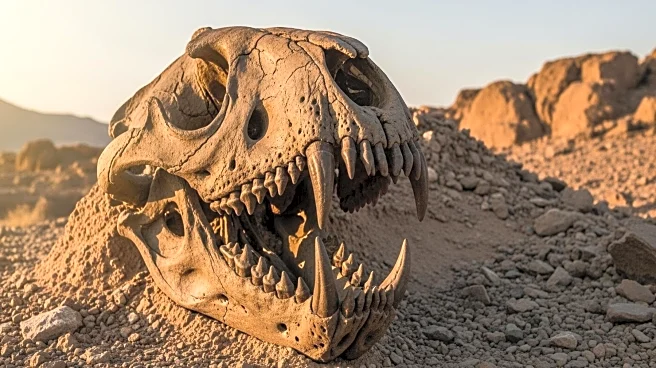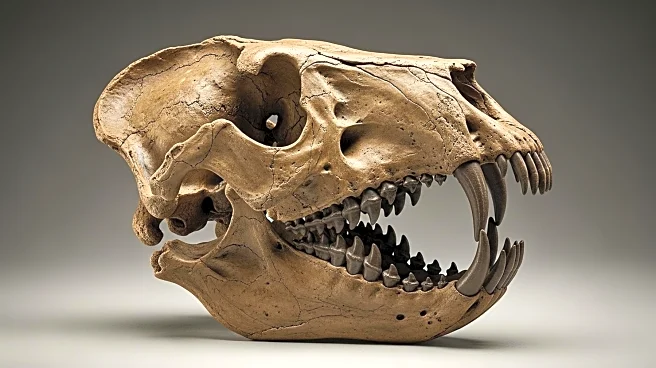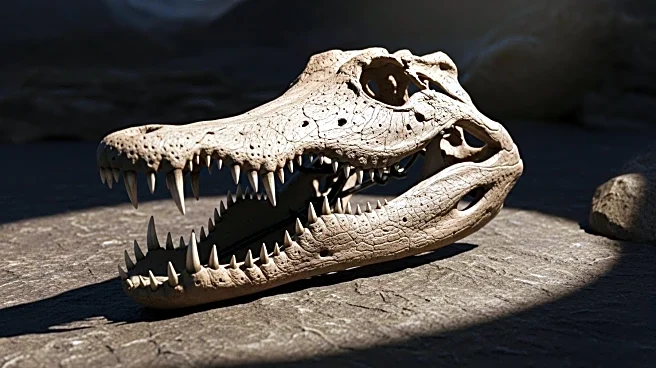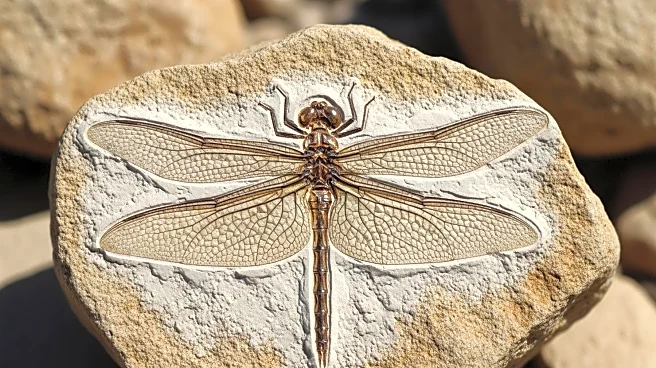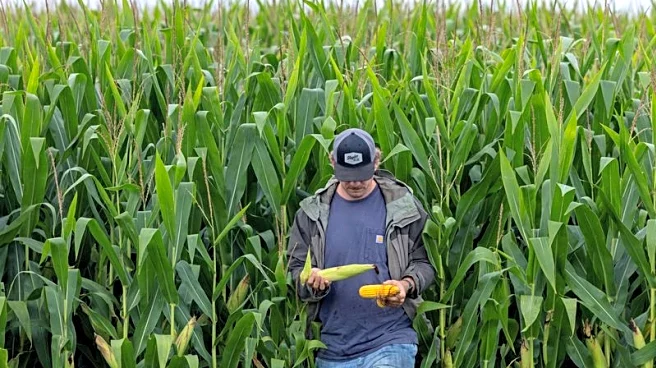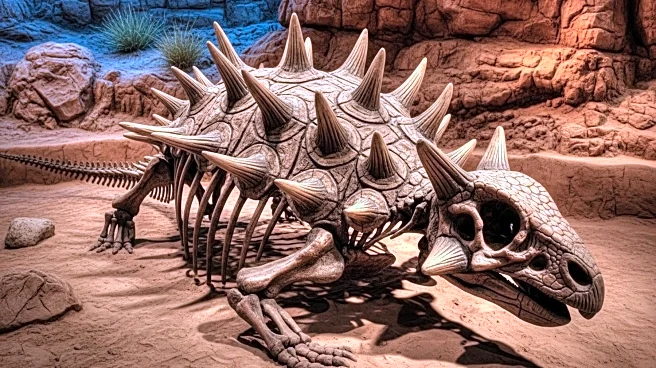What's Happening?
A new study has revealed the discovery of a gigantic crocodile-like hypercarnivore named Kostensuchus atrox in southern Patagonia, Argentina. The fossilized skeleton was found in 2020 and is part of an extinct group of reptiles related to living crocodiles and alligators. K. atrox, which grew up to 11.5 feet long and weighed about 550 pounds, was a formidable predator in the Cretaceous ecosystem, capable of hunting dinosaurs. The creature's anatomy, including a broad snout and robust forelimbs, suggests it was adept at taking down large prey. The discovery highlights the diversity of organisms that lived alongside dinosaurs, particularly terrestrial crocodylians, which were abundant during the Cretaceous period in South America and Africa.
Why It's Important?
The discovery of Kostensuchus atrox provides significant insights into the ecosystem dynamics during the Cretaceous period. It underscores the role of terrestrial crocodylians as both competitors and predators of dinosaurs, contributing to the understanding of ancient biodiversity. This finding enriches the paleontological record, offering a more comprehensive view of the interactions between different species in prehistoric times. The well-preserved fossils of K. atrox also enhance scientific knowledge about peirosaurid crocodyliforms, aiding in the study of evolutionary biology and the adaptation mechanisms of ancient reptiles.
What's Next?
Further research is expected to continue on the fossils of Kostensuchus atrox to explore its ecological role and interactions with other species in the Cretaceous period. Paleontologists may conduct comparative studies with other crocodyliforms to better understand the evolutionary pathways and environmental adaptations of these ancient predators. Additionally, ongoing excavations in Patagonia could lead to more discoveries, potentially unveiling new species and expanding the understanding of prehistoric ecosystems.
Beyond the Headlines
The discovery of K. atrox raises questions about the evolutionary pressures that shaped the development of hypercarnivorous traits in crocodyliforms. It also prompts a reevaluation of the ecological niches occupied by large predators during the Cretaceous period. The study of such ancient ecosystems can provide valuable lessons for modern conservation efforts, highlighting the importance of biodiversity and the complex interdependencies among species.
